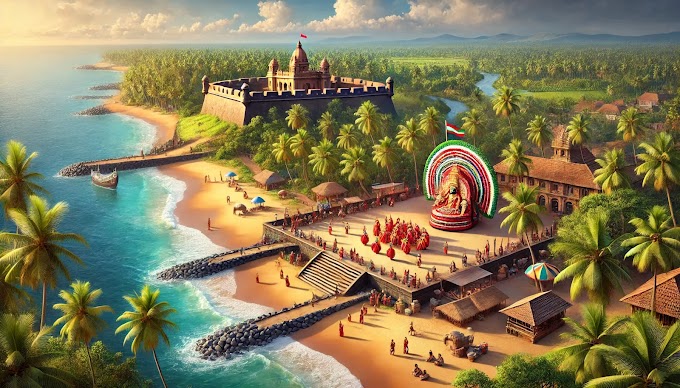Explore the History, Architecture, and Beauty of Qutub Minar - Timings, Entry Fees, and Best Time to Visit
Introduction: Qutub Minar, located in Mehrauli, Delhi, is the tallest brick minaret in the world, standing at 73 meters (240 feet). Constructed in 1199 AD by Qutb-ud-din Aibak, the founder of the Delhi Sultanate, this iconic structure symbolizes the beginning of Muslim rule in India. The five-story tower showcases an exquisite blend of Indo-Islamic architecture, with intricate carvings and stunning balconies adorning each level.
This magnificent monument has withstood the test of time and natural calamities, undergoing several repairs by rulers like Iltutmish and Feroz Shah Tughlaq. The surrounding Qutub Complex is home to other fascinating structures, including the Quwwat-ul-Islam Mosque and the Iron Pillar, making it a must-visit destination for history buffs and tourists alike.
History of Qutub Minar:
The construction of Qutub Minar began in 1199 AD by Qutb-ud-din Aibak, and it was later completed by his successor, Iltutmish, in 1236 AD. The tower was built to signify the victory of Islam in India, and it was originally intended to be a victory tower or a minaret to call Muslims to prayer. The miner's unique red sandstone structure reflects the fusion of Persian, Islamic, and Indian architectural styles.
Over the centuries, Qutub Minar has survived several lightning strikes and earthquakes. The fourth and fifth stories, which were heavily damaged, were rebuilt by Feroz Shah Tughlaq in the 14th century, and later repairs were carried out by British officials. Despite these challenges, the minaret continues to stand tall, attracting visitors from across the globe.
Architectural Significance:
Qutub Minar is an architectural masterpiece that showcases Indo-Islamic design. The five-tiered minaret features distinct styles in each story. The first three stories are made of red sandstone, while the upper two stories, added later, are made of marble and sandstone. Intricate Islamic calligraphy adorns the walls, and balconies with detailed carvings to enhance its beauty.
In the Qutub Complex, you will also find the famous Iron Pillar, an ancient iron structure known for its rust-resistant properties, and the Quwwat-ul-Islam Mosque, the first mosque built in India. The Alai Darwaza, a monumental gateway built by Alauddin Khalji in 1311, is another highlight of the complex.
Best Time to Visit Qutub Minar:
The best time to visit Qutub Minar is between October and March, during Delhi's cooler months. The mild weather allows for a comfortable exploration of the complex. Visiting in the early morning or late afternoon is recommended to avoid crowds and enjoy the serene atmosphere as the sunlight enhances the beauty of the red sandstone structure.
Visiting Timings and Entry Fees:
- Timings: The Qutub Minar complex is open from 7:00 AM to 5:00 PM, seven days a week.
- Entry Fee: ₹35 for Indian citizens, ₹550 for foreign tourists. Entry is free for children. Photography is allowed with an additional charge for video cameras.
Things to Do at Qutub Minar:
- Explore the Iron Pillar, an ancient marvel that continues to intrigue historians and scientists.
- Visit the Quwwat-ul-Islam Mosque, the first mosque in India.
- Admire the intricate carvings and Islamic calligraphy on the walls of the minaret.
- Enjoy panoramic views of the surrounding areas from the base of the tower.
- Attend the Qutub Festival, a cultural event held in November or December, featuring performances of classical Indian music and dance.
How to Reach Qutub Minar:
- Nearest Metro Station: Qutub Minar Metro Station on the Yellow Line.
- By Road: Easily accessible via local buses, taxis, and auto-rickshaws. Hop-on-hop-off bus services are also available during peak tourist seasons.
Conclusion:
A visit to Qutub Minar is a journey through India's rich history and architectural brilliance. Whether you're fascinated by its towering height, historical significance, or intricate carvings, Qutub Minar offers a unique glimpse into Delhi's past. Plan your visit during the cooler months for an unforgettable experience, and don’t miss the surrounding monuments in the Qutub Complex.







